Sigma Xi Distinguished Lecturers, 2020–2021
Potential hosts should contact lecturers directly to book events. In making arrangements, hosts should be specific about dates, lecture topic, scope of the lecturer's visit and any special accommodations that may be called for.
Each lecturer has designated his or her topic(s) for three different types of audiences. Where more than one level is shown, the lecture can be adjusted to the needs of the audience:
- P (Public)
Aimed at presenting scientific issues of general concern to a public audience.
- G (General)
Intended for a normal Sigma Xi audience of both scientists and other scholars representing a broad range of disciplines.
- S (Specialized)
Aimed at scientists and students in fields that are closely related to that of the lecturer.
Andrew Fisher
Professor, Hydrogeology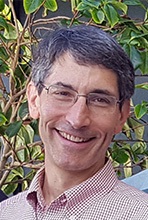
Earth and Planetary Sciences Department
University of California at Santa Cruz
Email
Phone:831-459-5598
Web
- Mapping, Modeling, Measuring and Monetizing Enhanced Groundwater Recharge with Stormwater (P, G, S)
- Subseafloor Experiments and Models Reveal Complex Patterns of Coupled Fluid-Heat-Solute Transport Through the Ocean Crust (P, G, S)
Andrew Fisher is a Professor of Earth and Planetary Sciences at UCSC, where he is also affiliated with departments of Environmental Studies, Microbiology and Environmental Toxicology, and Ocean Sciences. He is the UCSC Director for UC Water, co-PI for the Center for Dark Energy Biosphere Investigations, and founder of The Recharge Initiative (www.rechargeinitiative.org), a focused effort to protect, enhance, and improve the availability and reliability of groundwater resources. Fisher teaches classes in geology, hydrology, groundwater, and groundwater modeling, and conducts research on: surface water – groundwater interactions, managed recharge, geothermics, marine hydrothermal circulation, coupled flows (fluid-heat-solutes), water quality, and development of new hydrologic tools and techniques. He has served on numerous technical advisory committees for agencies, municipalities, and NGOs. Fisher earned a B.S. in Geology from Stanford University, and a Ph.D. in Marine Geology and Geophysics from the University of Miami. He is a Fellow of the American Geophysical Union and the Geological Society of America (GSA), received the O. E. Meinzer Award in Hydrogeology from the GSA. and is a two-time recipient of Excellence in Teaching Awards from UC Santa Cruz .
Agustin Fuentes
Professor of Anthropology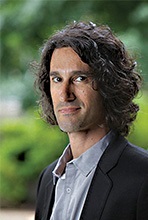
Princeton University
Email
Phone: 609-258-4549
Web
- Why We Believe: Evolution and the Human Way of Being (P, G)
- The Creative Species: Imagination and Collaboration in Human Evolution (P, G)
- What Race Is, and What It is Not …And Why It Matters (P, G, S)
Agustín Fuentes, trained in Zoology and Anthropology, is the Edmund P. Joyce C.S.C. Professor of Anthropology at the University of Notre Dame. His research delves into the how and why of being human. Ranging from chasing monkeys in jungles and cities, to exploring the lives of our evolutionary ancestors, to examining what people actually do across the globe, Professor Fuentes is interested in both the big questions and the small details of what makes humans and our closest relatives tick. He has published more than 150 peer reviewed articles and chapters, authored or edited 19 books and a three-volume encyclopedia, and conducted research across four continents and two-million years of human history. His current explorations include the roles of creativity and imagination in human evolution, multispecies anthropology, evolutionary theory, and the structures of race and racism. Fuentes is an active public scientist, a well-known blogger and lecturer, and a writer and explore for National Geographic. Fuentes’ recent books include “Race, Monogamy, and other lies they told you: busting myths about human nature” (U of California), “Conversations on Human Nature(s)” (Routledge), “The Creative Spark: how imagination made humans exceptional" (Dutton), and “Why We Believe: evolution and the human way of being” (Yale).
Tim Gay
Willa Cather Professor of Physics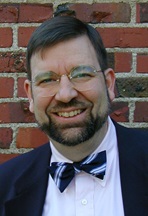
University of Nebraska - Lincoln
Email
Phone: 402-472-2773
Web
- Why Isn't God Ambidextrous? (P, G, S)
- Football Physics (P, G)
- One Atom Too Many: An Atomic Physicist's Attempt To Learn About Simple Homonuclear Diatomic Molecules (S)
Timothy Gay is the Willa Cather Professor of Physics at the University of Nebraska-Lincoln. After growing up in the small farming town of Pleasant Hill, Ohio, he attended Phillips Academy in Andover, Massachusetts and received his B.S. degree in physics from the Caltech in 1975. He graduated from the University of Chicago with a Ph.D. in experimental atomic physics in 1980, and held a postdoctoral appointment at Yale University in nuclear and atomic physics before joining the faculty of the University of Missouri-Rolla (now the Missouri University of Science and Technology) in 1984. Gay moved to the University of Nebraska-Lincoln in 1993. He has published over one hundred refereed scientific papers and has been the principal investigator on over $7M of research grants, primarily in the area of atomic, molecular and optical physics, high-energy nuclear physics, and neutrino physics. In addition to his work in the laboratory, Gay is known for teaching the largest physics class in the world: the 90,000 Nebraska Husker football fans that convene in Memorial Stadium in Lincoln on home football game Saturdays. During a pause in the action, Gay’s lessons are shown on the giant television screens at either end of the field. They have covered such topics as Newton’s Laws (blocking and tackling), projectile motion (kicking and punting), kinematics (chase strategies), and the ideal gas law (will filling the football with helium yield better hangtime?). Laboratory demonstrations have featured Gay being tackled by a 370-pound lineman and learning the finer points of passing from Heisman Trophy winner Eric Crouch. These lessons served as the basis of Gay’s book, The Physics of Football (2nd edition; Harper-Collins). Professor Gay is a Fellow of the American Physical Society (APS) and currently serves on its Board of Directors and as the Speaker of the APS Council.
Sir Christopher Lange
Professor of Radiation Oncology, College of Medicine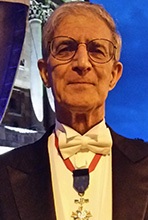
Professor of Molecular & Cell Biology, School of Graduate Studies
Director of Radiation Research and Radiation Biology
Associate Director of Radiation Oncology Residency Program
State University of New York, Downstate Medical Center
Email
Phone: 718-270-1050
- Stem Cells & Regeneration: A Quantitative Explanation of Organismal Survival (G, S)
- Cancer Stem Cells: The Key to Individualization of Cancer Therapy (G, S)
- Mammalian Chromosome Structure in Interphase (S)
Prof. Lange’s entire career has dealt with understanding the mechanisms of how ionizing radiations affect molecules (especially DNA and the induction and repair of double strand breaks), how the kinetics of those changes affect cell survival and how changes in cell survival determine the survival of tissues, organisms, and tumors. This has led to many seminal works, often more than a decade ahead of the field. These studies have also shown the importance of radiation research in many other fields of science (physiology, cell biology, structural biology, genetics, biophysics, polymer physical chemistry, etc.) and medicine (radiation oncology, sonography, etc.).
Upon graduation from MIT (1961) with an S.B. in Physics (minors in Biology, Chemistry and Philosophy and thesis in Alex Rich’s lab on x-ray crystallography – isolation from rabbit muscle, crystallization and unit cell determination of diphosphofructo aldolase), Lange went to Oxford University, where he worked in Frank Ellis’ Radiation Therapy Department in the Churchill Hospital, as a Medical Research Council Research Assistant, and subsequently at the Paterson Laboratories of the Christie Hospital & Holt Radium Institute in Manchester, as a tenured Research (later Senior Research) Officer in the National Health Service, in both places under the tutelage of Professor Laszlo G. Lajtha ( a founder of the field of stem cell kinetics; later CBE). Lange received his doctorate from Oxford University (D.Phil., Fac. Med.) in 1968.
Lange also became a Professor of Physiology & Biophysics and then of Molecular & Cell Biology in the SUNY Downstate School of Graduate Studies (1992- ), Associate Director of the Radiation Oncology Residency Program (1998- ), and Associate Chair of Radiation Oncology (2010-2016).
Lange has been honored with several awards, including: (1) The Knight’s Cross, Order of Merit, Republic of Poland (KCOM), awarded by the President of Poland (11/21/2004) for outstanding contributions to Polish Science and Education; (2) an Honorary Lifetime Consultantship to the Swietokrzyskie Centrum Onkologii, Poland (2005); (3) named Scientific Advisor to the New York State Assembly (13th and 16th ADs; 2010); (4) election to the Board of Directors (1999-2005) and the Executive Committee (2002-05), of Sigma Xi, The International Scientific Research Honor Society; (5) the Presidential Certificate of Gratitude for Contributions to Science, Faculty of Science Presidential Distinguished Lecturer, Hirosaki University, Japan (1979); and (6) election as an Honorary Member, Omicron Delta Epsilon (International Economics Honor Society) (1978). Lange is a biographee of many Who’s Whos, and since 2006, annually, of Marquis’s Who’s Who in the World. In 2017 Lange received the Marquis Who's Who Lifetime Achievement Award. He also serves as a referee for 28 professional journals.
Oge Marques
Professor, Computer Science and Engineering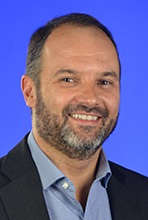
Florida Atlantic University
Email
Phone: 561-866-7144
Web
- Can You Trust What You See? The Magic of Visual Perception (P, G, S)
- Advancements in Artificial Intelligence (AI): Technology, Risks, Applications< and Implications (P, G, S)
- The Artificial Intelligence (AI) Revolution in Medicine (P, G, S)
Oge Marques is a Professor of Computer Science and Engineering in the College of Engineering and Computer Science and, by courtesy, a Professor of Information Technology in the College of Business at Florida Atlantic University (FAU) (Boca Raton, FL). He received his PhD in Computer Engineering from FAU in 2001 and a Master’s in Electronic Engineering from Philips International Institute (the Netherlands). He is a world-renowned expert in the area of intelligent processing of visual information, which encompasses the fields of image processing, computer vision, human vision, artificial intelligence (AI) and machine learning. His current research focuses on the intersection of AI and medicine. He is the author of ten technical books, one patent, and more than a hundred scientific articles in his fields of expertise. He has more than 30 years of teaching experience in different countries (USA, Austria, Brazil, Netherlands, Spain, France, and India). Dr. Marques is a Fellow of the Leshner Leadership Institute of the American Association for the Advancement of Science (AAAS), and a Senior Member of both the IEEE (Institute of Electrical and Electronics Engineers) and the ACM (Association for Computing Machinery). He is also a Tau Beta Pi Eminent Engineer and a member of the honor societies of Sigma Xi, Phi Kappa Phi and Upsilon Pi Epsilon. He has won several teaching awards, including: the Engineers’ Council John J. Guarrera Engineering Educator of the Year Award (2019), the Outstanding Mid-Career Teaching Award, American Society for Engineering Education - Southeastern Section (ASEE-SE) (2011), and the Excellence and Innovation in Undergraduate Teaching Award, FAU, three times (2018, 2011, 2004). He speaks Portuguese, Spanish, and French. In his spare time, he enjoys traveling, watching soccer, listening to jazz, and reading philosophy and psychology books. He lives in South Florida with his wife.
Heather McKillop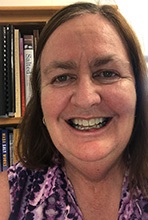
Thomas & Lillian Landrum Alumni Professor
Louisiana State University
Email
Phone: 225-578-6178
Web
- Submerged Ancient Maya Salt Works, Belize (G, S)
- Using 3D Technology in Underwater Maya Archaeology at the Paynes Creek Salt Works, Belize” (G, S)
- Sea-level Rise Submerged Ancient Maya Coastal Sites (S)
- Salt Production and the Ancient Maya Marketplace Economy (G, S)
- Ancient Maya Canoe Travel and Sea Trade (G, S)
Heather McKillop has carried out archaeological research on the ancient Maya on the coast, offshore
islands, and underwater since 1979. She earned her MA at Trent University (Canada) and her PhD in
Anthropology at the University of California-Santa Barbara. Since the discovery of the wooden buildings and objects preserved in peat below the seafloor in 2004, she has focused her research on discovery, mapping, and excavations of wooden buildings with briquetage associated with a massive salt industry.
She established the Digital Imaging and Visualization in Archaeology (DIVA) lab for 3D digital imaging
and printing of waterlogged and other fragile materials. She is a lecturer for the Archaeological Institute of America, and was awarded an LSU Distinguished Professor Award, and honored at half-time with a video tribute at an LSU football game.
Laurie McNeil
Bernard Gray Distinguished Professor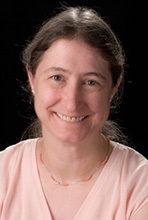
University of North Carolina at Chapel Hill
Email
Phone: 919-962-0963
Web
- OPV, OLED, OFET, Oh my! Photons, Electrons and Phonons in Organic Semiconductors (S)
- Changing the Climate for Women in Science (G)
- Good Vibrations: The Interplay of Music and Physics (P)
Laurie McNeil is the Bernard Gray Distinguished Professor in the Department of Physics and Astronomy at the University of North Carolina at Chapel Hill. She earned an A.B. in Chemistry and Physics from Radcliffe College, Harvard University, and a Ph.D. in Physics from the University of Illinois at Urbana-Champaign. After two years as an IBM Postdoctoral Fellow at MIT (with the late Prof. Millie Dresselhaus) she joined the faculty at UNC-CH in 1984 and has been there ever since, with the exception of sabbatical sojourns at Argonne National Laboratory, DuPont Central Research & Development, and Nanyang Technological University in Singapore. She serves as a Deputy Editor at the Journal of Applied Physics. Prof. McNeil is a materials physicist who uses optical spectroscopy to investigate the properties of semiconductors and insulators. She is a Fellow of the American Physical Society and has held a variety of leadership roles in that organization. She was the inaugural holder of the Kathryn McCarthy Lectureship at Tufts and the Dorothy K. Daspit Lectureship at Tulane and has worked throughout her career to enhance the representation and success of women in physics. As a Chapman Family Fellow and Academic Leadership Fellow at the Institute for the Arts & Humanities at UNC-CH she led the transformation of the teaching of the introductory physics courses in her department to use research-validated, student-centered pedagogy. Together with a colleague in the Department of Music at UNC-CH she teaches a course for first-year undergraduates on the physics of musical instruments. Students in the course build their own unique instruments and give a public performance of their own compositions for ensembles of those instruments.
Natalie Munro
Professor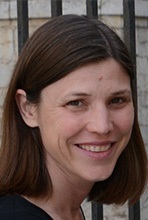
University of Connecticut
Email
Phone: 860-878-9414
Web
- The First Feast: How Communal Meals became a Central Part of Human Rituals (P, G, S)
- From Hunting to Herding: The Emergence of Animal Domestication in Southwest Asia (P, G, S)
- The Spread of Agriculture into Europe: the Case of Franchthi Cave, Greece (P, G, S)
Natalie Munro is a professor in the Department of Anthropology at the University of Connecticut. She is a graduate of the University of Arizona (Ph.D. 2001), Simon Fraser University (M.A. 1994) and Southern Methodist University (B.S 1991). In 2001-2002 she held a postdoctoral fellowship at the National Museum of Natural History at the Smithsonian Institution. In 2015-2016 she was a fellow at the University of Connecticut’s Humanities Institute and in 2017-2018 she was a visiting professor at the Mandel Scholion Center of Interdisciplinary Research at the Hebrew University in Jerusalem. Munro studies the transition from foraging to farming societies in Southwest Asia using ancient animal remains. She is most interested in the formative conditions of agriculture and animal domestication, and the spread of Neolithic societies into Europe. Using a behavioral ecological framework she connects large zooarchaeological databases from individual sites to broader themes such as human demography, animal domestication, sedentarization, and the emergence of public ritual practice at a regional scale. Munro has active research projects in Turkey and Israel, has recently worked in Jordan and Greece and is published widely in peer-reviewed journals such as Science, PNAS, Current Anthropology, and Journal of Human Evolution. Her research has been supported by grants from the National Science Foundation and the Wenner-Gren Foundation for Anthropological Research. She has served as an Associate Editor for the Journal of Human Evolution, and is a long-term board member of the Connecticut Museum of Natural History.
Darrell Pepper
Professor of Mechanical Engineering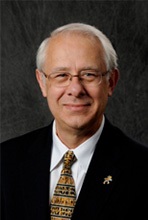
University of Nevada Las Vegas
Email
Phone: 702-895-1056
Web
- Finite Elements, Boundary Elements, and Meshless Methods (P, G, S)
- Dealing with Hazardous Accidental Releases – Experiences at SRL (P, G, S)
- Solar-powered UAVs (P, G, S)
Dr. Pepper joined UNLV in 1992 and is Professor of Mechanical Engineering and former Director of the Nevada Center for Advanced Computational Methods. He served as Chairman of the Department of Mechanical Engineering from 1996-2002, and Interim Dean of the College of Engineering from 2002-2003. He served as an ASME Congressional Fellow in 2004, working for US Senator Dianne Feinstein. He was appointed Distinguished Visiting Professor at the US Air Force Academy from 2011-2013. He obtained his BSME (1968), MSAE (1970), and Ph.D. (1974) from the University of Missouri-Rolla (now MS&T). He worked at the Savannah River Laboratory in Aiken, SC from 1974-1987, and taught at the University of South Carolina - Aiken. From 1987-1990, he was Chief Scientist of the Marquardt Company in Van Nuys, CA. In 1988, he co-founded Advanced Projects Research, Inc., in Moorpark, CA, and was Professor of Mechanical Engineering at California State University-Northridge. In 2001, he founded Nevada Energy and Environmental Systems. Dr. Pepper has published over 350 technical papers, including six books on advanced numerical modeling and IAQ. Dr. Pepper is a Life Fellow of ASME, an Associate Fellow of AIAA, and Editor-in-Chief of Computational Thermal Sciences. He was an Associate Editor of the ASME J. of Heat Transfer, and Associate Editor of the AIAA J. Thermophysics and Heat Transfer. He received the UNLV Barrick Distinguished Scholar Award in 1996, and twice received the Distinguished Research Award from the College of Engineering. Dr. Pepper was awarded the ICCES Eric Reissner Medal in 2008, the Harry Reid Silver State Research Medal in 2010, the AIAA Distinguished Service Award in 2011, the AIAA Energy Systems Award in 2012, and the ICCES Lifetime Achievement Award in 2015. He served on the Baldrige National Quality Award Board of Examiners, was an ABET Commissioner from 2008-2013, and a member of the ABET Board of Directors/Delegates from 2013-2016.
David Pfennig
Professor, Department of Biology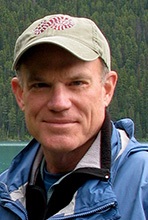
The University of North Carolina at Chapel Hill
Email
Phone: 919-306-5144
Web
- Plasticity, Epigenetics, and Evolution (P, G)
- Life Imitating Life: The Evolution of Mimicry (P, G, S)
- Phenotypic Plasticity and the Evolutionary Origins of Novel Traits (S)
David Pfennig is an evolutionary biologist at The University of North Carolina at Chapel Hill. He received two BS degrees (in Zoology and Geology) and a Ph.D. from the University of Texas at Austin. His research focuses on how the interplay between evolution, ecology, and development shapes biodiversity. He has published over 130 technical articles (including in Nature and Science) as well as a scholarly monograph, Evolution’s Wedge (co-authored with Karin Pfennig). His research has been funded continuously since 1994 by the National Science Foundation and has been featured in The New York Times, Newsweek, National Geographic, Scientific American, New Scientist, and Discover. He is a contributing author to Scientific American and has appeared on television on BBC/PBS’s Nature series (twice) as well as on National Geographic TV and KUAT’s “The Desert Speaks”. He has spoken at over 85 universities and at dozens of museums, civic groups, and K-12 schools.
June Pilcher
Alumni Distinguished Professor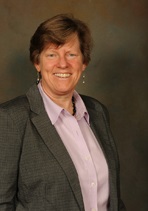
Clemson University
Email
Phone: 864-656-4985
Web
- Just Sleep Already! (P, G)
- That Tricky Human Brain (P, G)
- Applying Science outside of Science (S)
June J. Pilcher is an Alumni Distinguished Professor of Psychology at Clemson University. She earned her Ph.D. in Biopsychology from the University of Chicago (1989). She was enlisted in the US Navy as a hospital corpsman prior to completing her B.A. and served as an officer as a research psychologist in the US Army after receiving her Ph.D. She started her academic career at Bradley University before joining the faculty at Clemson University in 2001. Dr. Pilcher has been named a Fellow in the Association for Psychological Science. She was also named as the Outstanding Researcher of the Year for Clemson’s Sigma Xi Chapter in 2011 and was the 2015 recipient of the Class of ’39 Award at Clemson University. Dr. Pilcher was the Fulbright-Freud Visiting Scholar 2011-2012 at the University of Vienna and the Sigmund Freud Museum in Vienna, Austria and a Fulbright Specialist for Public/Global Health at the Finnish Institute for Occupational Health and Oulu University in Oulu, Finland in 2017. In the 2018-2019 academic year, she is serving as a Jefferson Science Fellow at the U.S. Agency for International Development in Washington, D.C. Dr. Pilcher’s research is broadly based on the effects of stress on performance, health, and well-being. She has taught a wide range of classes focused on brain and behavior, human nature, and health. She has given over 100 invited talks locally, nationally, and internationally. Dr. Pilcher’s other interests include training in a non-competitive, traditional martial art which she teaches as Leisure Skills classes at Clemson and working with a greyhound adoption agency to find homes for ex-racing greyhounds. She is always excited to talk to all types of audiences about either of these topics as well as her more scientific topics of interest.
Luisa Rebull
Associate Research Scientist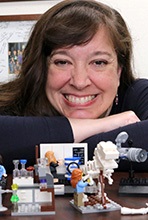
California Institute of Technology-IPAC
Email
Phone: 626-395-4565
Web
- More Than Your Eyes Can See: Infrared Light (P)
- Getting Your Hands on Real Astronomy Data (P, G, S)
- Stellar Rotation in Clusters with K2 (S)
Dr. Rebull is an observational stellar astronomer. She studies how stars form and how stars rotate as a function of mass and age. Dr. Rebull works for NASA's long-wavelength astrophysics archive, IRSA, which help curate data and archive data from ongoing missions. She helps create and maintain the archives and help astronomers (and educators/students) use the archives and develop tools that help astronomers make discoveries. In addition, Dr. Rebull helps high school science teachers learn how real research is conducted. She runs the NASA/IPAC Teacher Archive Research Program (NITARP), that partners small groups of educators with a research astronomer for a year-long astronomy research project. Dr. Rebull has a bachelors in Physics from the College of William and Mary and a masters and PhD in Astronomy and Astrophysics from the University of Chicago.Her postdoctoral fellowship was at NASA’s Jet Propulsion Laboratory.
Corinna Ross
Associate Professor of Biology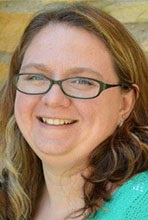
Texas A&M University San Antonio
Email
Phone: 210-784-2227
- The Search For the Fountain of Youth (P, G, S)
- Early Development, Obesity and Aging: What We Can Learn From Monkeys (P, G, S)
- Monkeys and Children and Science Oh My: An Attempt to Balance a Career in Science With Motherhood
Dr. Corinna Ross is an Associate Professor of Biology at Texas A&M University San Antonio and an Associate Professor at the Southwest National Primate Research Center, Texas Biomedical Research Institute. She is a graduate of the University of Nebraska Lincoln (PhD 2005), University of Nebraska Omaha (MA 1999) and Cornell University (BS 1997). She was a postdoctoral fellow at the University of Texas Health Science Center San Antonio, with a fellowship in the Biology of Aging. After joining the faculty at A&M San Antonio she was awarded a Claude D. Pepper Center research fellowship to continue training in translational gerontology. She is currently the Southwest National Primate Research Center Marmoset Colony Administrator, the San Antonio Marmoset Aging Program co-director, and the San Antonio Pepper Center Core co-director. Her research focuses on marmosets, which are small primates, to explore questions in primate behavior and physiology, and translational biomedicine.
Compton James Tucker III
Senior Biospheric Scientist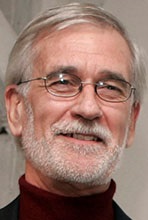
NASA/Goddard Space Flight Center
Email
Phone: 301-614-6644
- The Satellite Record of Earth’s Climate: The late 1970s to Now (P, G, S)
- Dinosaurs to Milankovitch Cycles: The last 250 Million Years (P, G, S)
- The Revolution in Food Security and Precision Agriculture (P, G, S)
Compton Tucker received his B.S. degree in biological science in 1969, his M.S. degree in 1973, and his Ph.D. degree in 1975, all from Colorado State. As a postdoctoral fellow at NASA/Goddard in 1975-1976, Tucker consolidated two near-infrared bands and adding a second short-wave infrared band to the thematic mapper instruments on Landsat-4 and -5. He was also responsible for making the first and second bands on the Advanced Very High Resolution Radiometer imager discrete, enabling NDVI measurements from polar-orbiting meteorological satellites starting in July of 1981 with NOAA-7. Since becoming a NASA employee in 1977, he has used satellite data for famine early warning, desert locust control, terrestrial primary production, deforestation & land cover mapping, predicting ecologically-coupled disease outbreaks, mapping glacier extent, and mapping climatic effects on global vegetation. From 2002-2012 he was active in NASA’s Space Archaeology Program, leading a NASA team assisting archaeologists mapping ancient sites with ground penetrating radar and magnetometers in Turkey at the sites of Troy, in the Granicus River Valley, and at Gordion, the home of King Midas. Tucker has authored or coauthored more than 190 journal articles that have been cited 60,000 times by Google Scholar, is an adjunct professor at the University of Maryland and a consulting scholar at the University of Pennsylvania’s Museum of Archaeology and Anthropology. He is a Fellow of the American Geophysical Union and the American Association for the Advancement of Science. He has been awarded NASA’s Exceptional Scientific Achievement Medal, the U.S. Geological Survey’s Pecora Award, the National Air and Space Museum Trophy, the Missouri Botanical Garden’s Henry Shaw Medal, the Royal Danish Geographical Society’s Galathea Medal, the Swedish Society of Anthropology and Geography’s Vega Medal, the Mongolian Friendship Medal, and received a Presidential Award for Meritorious Senior Professional Service.
Danielle Wood
Assistant Professor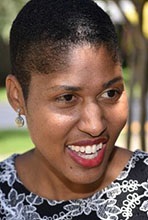
Director of Space Enabled Research Group
Massachusetts Institute of Technology
Email
Web
- Technology from Space Enables Sustainable Development on Earth (P, G, S)
- Designing Complex Systems in Support of Sustainable Development using Systems Architecture (G, S)
- Space Technology for the Development Leader (S)
Professor Danielle Wood directs the Space Enabled Research Group within the MIT Media Lab which seeks to advance justice in Earth's complex systems using designs enabled by space. Prof. Wood is a scholar of societal development with a background that includes satellite design, earth science applications, systems engineering, and technology policy for the US and emerging nations. In her research, Prof. Wood applies these skills to design innovative systems that harness space technology to address development challenges in collaboration with development leaders. Professor Wood’s research also develops systems analysis tools to improve decision making during the design of complex systems. Prior to joining MIT faculty, Prof. Wood worked as the Applied Sciences Manager within the Earth Science Division of Goddard Space Flight Center. Previously, she served as Special Assistant to the Deputy Administrator at NASA Headquarters in Washington, DC. Before working at NASA, Prof. Wood held positions at the Aerospace Corporation, Johns Hopkins University, and the United Nations Office of Outer Space Affairs. Prof. Wood studied at the Massachusetts Institute of Technology, where she earned a PhD in engineering systems, SM in aeronautics and astronautics, SM in technology policy, and SB in aerospace engineering.